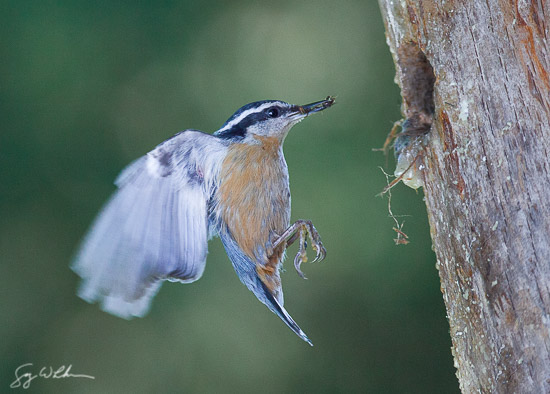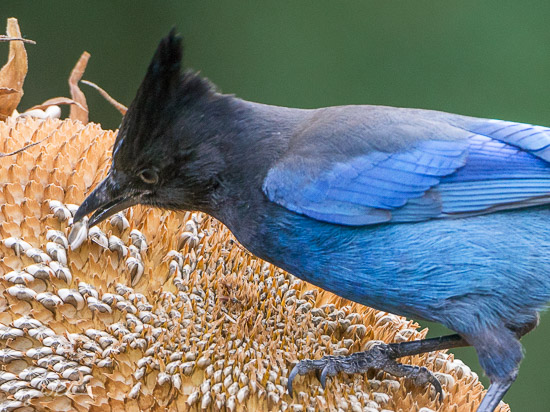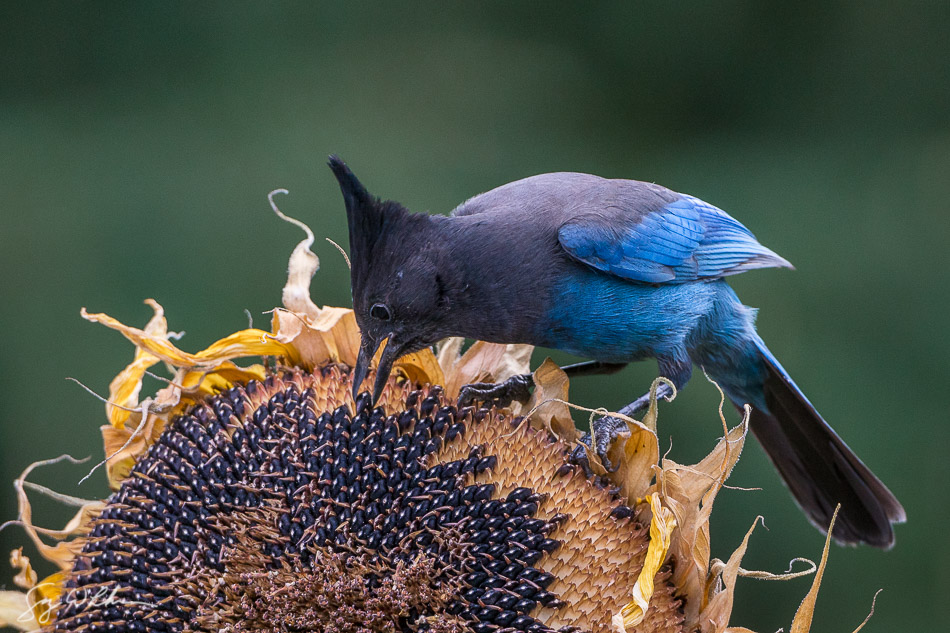On sunny summer days I sometimes carry a white, 42” circular light diffuser (16” folded) when photographing wildflowers. As the sweet morning light burns off–leaving a harsh-shadow sun–I turn to floral portraits with the light disc aid. The one I use most is an old Photoflex. On long hikes, I make do with a 22” disc that weighs about 6 oz. In use, a white-white (white translucent) disc blocks the direct sun, creating a cloudy-bright softness perfect for floral portraits. The large white diffuser has other uses, too. In particular, I use it to bounce light into shadow areas for bird photography set-ups.

A few years ago I had a pair of Red-breasted Nuthatches nest in a home-made nest hole I had placed on the north side of our house. The hole didn’t get direct sunlight, so on sunny afternoons I set up the 42” Photoflex to reflect in a bright but diffuse light. By locating it close to the hole, the diffuser produced a two stops gain, enough to allow me to freeze the parent birds in flight as they approached with bug-filled bills.

Recently, I positioned a sunflower seed head on our back deck to attract Steller’s Jays. The jays are shy birds, so I shot through as open window using the house as a blind. I quickly captured many frame-filling images of the birds stuffing their crops with seeds. I had a problem, though, due to the Steller’s Jays black head. When they reached down for a seed their dark face–no longer sky lit–went totally black. I tried in Lightroom to retrieve some detail there, but the bird’s face became unacceptably noisy.
Light disc to the rescue, on my next shoot I taped the diffuser to a stepladder placed just below the sunflower. It added a stop of light, enough that I could bring out detail in the bird’s head even as it reached for a seed.
Note: An off-camera fill flash could achieve similar results, but I’m wary of flash looking unnatural, and then when you hold down the shutter trying for that decisive moment, the flash is likely to fire intermittently, reducing the odds of a perfect capture.